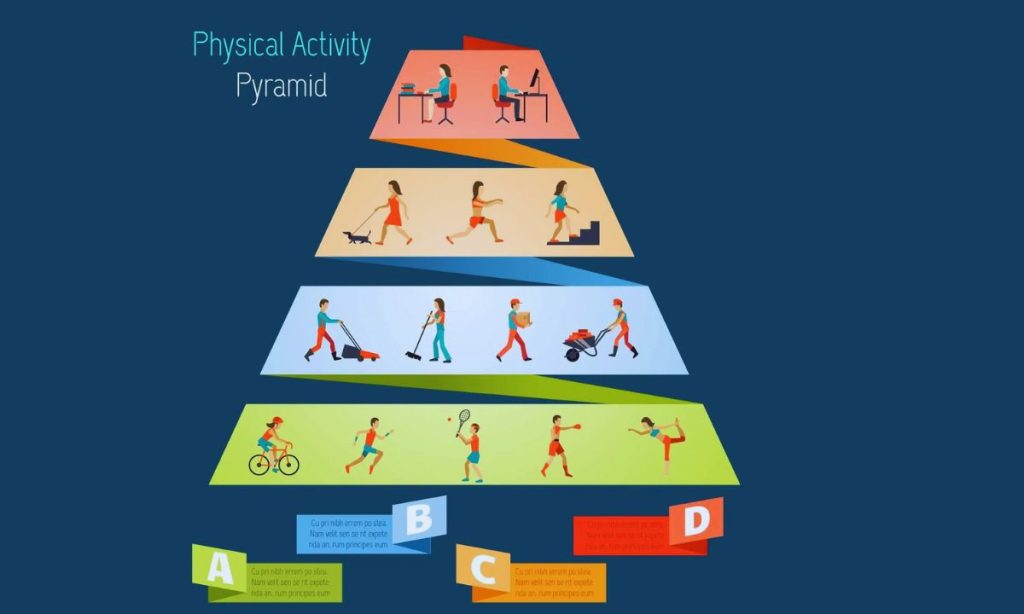The Physical Activity Pyramid is a guide that helps people understand how to balance different types of activities. It is divided into levels, each representing a different type of activity, from those we should do often to those we should limit. Knowing where sedentary activities fit into this pyramid is crucial for maintaining a healthy lifestyle.
What is the Physical Activity Pyramid?
The Physical Activity Pyramid is a visual tool used to illustrate the various levels of physical activity. It helps people understand the importance of different activities and how often they should engage in them. The pyramid is designed to promote a balanced approach to physical activity and overall health.
Levels of the Physical Activity Pyramid
The pyramid consists of several levels:
- Base Level: This includes daily physical activities like walking, cleaning, and gardening. These activities should be done frequently as they form the foundation of a healthy lifestyle.
- Level 2: This level includes aerobic activities such as running, swimming, and cycling. These exercises improve cardiovascular health and should be done regularly, ideally three to five times a week.
- Level 3: This level focuses on strength and flexibility activities like weightlifting, yoga, and stretching. These activities should be incorporated into your routine two to three times a week to build muscle and improve flexibility.
- Top Level: This is where sedentary activities, such as watching TV, playing video games, and using the computer, are placed. These activities should be limited because they do not contribute to physical fitness.
Position of Sedentary Activities
Sedentary activities are positioned at the top of the pyramid. This placement indicates that these activities should be done sparingly. Examples of sedentary activities include watching TV, playing video games, and sitting for long periods. These activities can have negative effects on health if done excessively.
Impact of Sedentary Activities on Health
Excessive sedentary behavior can lead to various health issues:
- Short-term effects: Reduced calorie burn, muscle stiffness, and lower energy levels.
- Long-term effects: Increased risk of obesity, cardiovascular diseases, diabetes, and mental health issues such as anxiety and depression.
Guidelines for Balancing Sedentary Activities
To maintain a healthy lifestyle, it is important to balance sedentary activities with physical activities. Here are some tips:
- Limit screen time: Aim to reduce time spent on activities like watching TV or playing video games to less than two hours a day.
- Take active breaks: Stand up and move around every 30 minutes if you have a desk job or spend a lot of time sitting.
- Incorporate physical activity: Include activities like walking or cycling into your daily routine. Use stairs instead of elevators and walk short distances instead of driving.
Benefits of Reducing Sedentary Activities
Reducing sedentary activities and increasing physical activity can lead to numerous health benefits:
- Improved physical health: Better weight management, reduced risk of chronic diseases, and improved muscle strength.
- Enhanced mental health: Reduced stress, improved mood, and better sleep quality.
- Increased overall well-being: More energy, improved productivity, and a better quality of life.
Takeaways
Understanding where sedentary activities belong on the Physical Activity Pyramid helps us recognize the need to limit these activities. By balancing sedentary behaviors with more active ones, we can improve our physical and mental health. Making small changes to reduce sedentary time and increase physical activity can lead to significant health benefits.
























